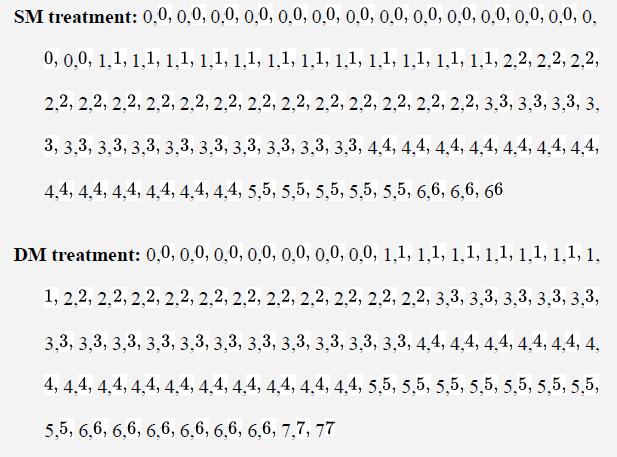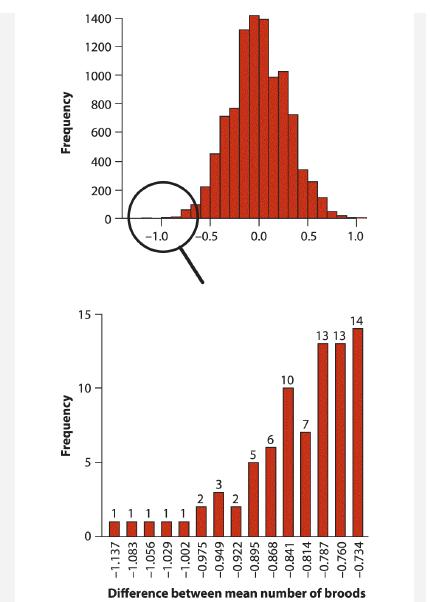The pseudoscorpion Cordylochernes scorpioides lives in tropical forests, where it rides on the backs of harlequin beetles
Question:
The pseudoscorpion Cordylochernes scorpioides lives in tropical forests, where it rides on the backs of harlequin beetles to reach the decaying fig trees in which they live. Females of the species mate with multiple males over their short lifetimes, which is puzzling because mating just once provides all the sperm she needs to fertilize her eggs. A possible advantage is that by mating multiple times, a female increases the chances of mating with at least one sperm-compatible male, if incompatibilities are present in the population. To investigate, Newcomer et al. (1999) recorded the number of successful broods by female pseudoscorpions randomly assigned one of two treatments. Females were each mated to two different males (DM treatment), or they were each mated twice to the same male (SM). This design provided the same total amount of sperm to females in both treatments, but DM females received genetically more diverse sperm than SM females did. The number of successful broods of offspring for each female is listed below. The data were not normally distributed; to test the null hypothesis of no difference between treatments in the mean number of broods, we carried out a permutation test in which the data were randomly reshuffled 10,000 times on the computer. Our test statistic was the difference between groups in the mean number of broods (SM minus DM). The observed value of this difference was −0.841. The null distribution from the 10,000 permutations is shown in the upper panel of the figure on the next page. The far left tail of the null distribution is shown in the lower panel. Numbers below each bar give the exact values of the test statistic; numbers above give the frequency of each of the values in 10,000 permutations. Using these values, carry out the permutation test.



Step by Step Answer:

The Analysis Of Biological Data
ISBN: 9781319226237
3rd Edition
Authors: Michael C. Whitlock, Dolph Schluter





